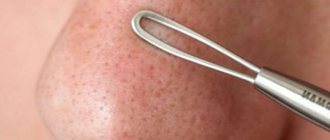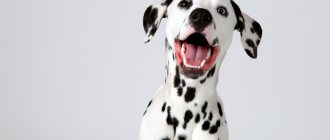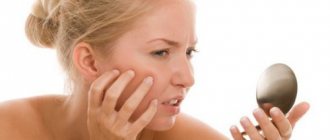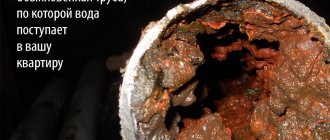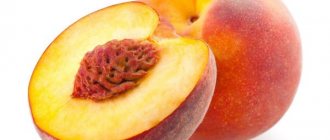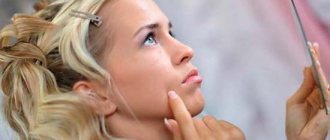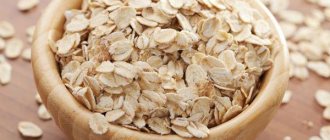Henna for hair: benefits
Today, in order to be stylish, it is enough to purchase a stylish package of selected henna. This paint contains no chemicals or other impurities, and is brought directly from distant India. That's why quality is guaranteed. The composition of this natural paint exceeds all expectations, and the color palette is replete with all sorts of shades: brown, light brown. Henna has many of them: from gold to copper.
Where is henna made?
The henna herb itself, which is the basis of Indian hair dyes, is the dried leaves of the lawsonia plant. India, Pakistan, Sri Lanka and other eastern countries are rich in such plantations. Lawsonia is a lover of warm climates. It gives exactly these warm sunny shades to the hair. It is precisely because of its natural origin that we can safely say that henna has benefits for hair that cannot be compared with artificial dyes.
The henna is carefully processed in factories in India and packaged locally. This technology does not allow mixing simple grass or anything else into the paint during transportation. If you want to be truly stylish, well-groomed and healthy, choose selected henna for yourself!
But you need to be careful, because although the East is a delicate matter, we get a large number of fakes from there
That is why it is important to take only the highest quality products from the supplier country, which is often determined by price. But we’ll talk about this in more detail below.
Benefits of henna for hair
How beneficial is henna for hair? As mentioned above, henna is useful at least because it is a natural dye. By the way, if they say that there is colorless henna for masks, this is nonsense. Henna cannot be colorless
Therefore, when purchasing henna for masks or hair treatments, it is important to consult with your hairdresser to avoid problems with hair coloring
Benefits of henna for hair and health:
- Henna prevents hair breakage. This is especially true for regions with hard water, because... This is a rather aggressive environment for hair. This is not to say that this is a panacea, but to prevent breakage, the benefits of henna for hair are invaluable.
- Henna works great for problems with dry skin and “oily” hair. Natural antiseptic elements have a beneficial effect on protecting the scalp from fungus.
- When using henna to color hair, the dye does not harm the natural hair color and does not damage the roots. Thus, chemical dyes are distinguished by the fact that they “burn out” the hair, it becomes weak, and often splits.
- Microelements of henna perfectly nourish the hair follicles. Systematic henna masks for hair can restore health not only to the hair, but also to the skin.
- The benefits of henna for hair are noticeable in case of dandruff problems. If you have dandruff, henna is also recommended in the form of masks, because... The microelements included in its composition correct the functioning of the sebaceous glands of the head. As mentioned above, this helps eliminate “oily scalp” and solves the problem of dandruff in the initial, not advanced version of the problem.
- Henna has no obvious contraindications, so it is often used for hair coloring even by pregnant women. Allergic reactions to the natural dye were not noticed, which is why this method of hair coloring has become so popular. Of course, the benefits of henna for hair are limited by individual tolerance, but as reviews and practice show, there are only a few such people.
- Many experts are inclined to believe that henna is good for hair, because... strengthens them and protects them from external irritants and sunlight. Some believe that henna can protect hair from fading in the sun, for example, in the summer.
- You can use henna at any age. Both at a young age and in old age, henna is perceived almost equally by the body.
It is noteworthy that in India, henna is considered a product that every woman should have. The benefits and harms of henna in this country are not covered anywhere, because... this product is as popular as salt in our stores.
Based on the above advantages, it becomes clear that this dye really has a lot of positive reviews. The benefits and harms of henna for hair are most likely a matter of personal preference. Few natural components can harm as much as chemistry can.
However, it is important to understand that each nationality is different in its structure, skin color and, of course, hair structure. Therefore, what is very popular and accepted in India may not always help our hair types.
Remember that henna is a permanent dye, so if used unprofessionally, you can “change yourself beyond recognition.”
Benefits of henna for the face
Colorless henna has many cosmetic and healing properties, thanks to the substances in its composition. First of all, masks with colorless henna are used as a remedy to eliminate facial skin problems. Components such as chrysophanol, ceaxatin, physalen relieve inflammation, soothe the skin, and also have an antifungal and antimicrobial effect.
For loose skin, it contains rutin, which strengthens blood vessels. This provides better oxygen access to the cells. And emodin has a restorative property.
It is also suitable for those who do not have any special problems. In this case, masks with the addition of henna will serve as an excellent means of anti-aging prevention and simply give the skin a lot of nutrients.
Henna masks for dry hair. Recipes for hair masks with henna
Masks with henna to strengthen hair: 1) You will need: henna (already diluted with water), beaten yolk, burdock oil, sour cream. Add all ingredients to the slurry (butter and sour cream 2 tablespoons each), mix. Apply to hair.2) Recipe with blue clay. Mix henna and clay with hot water, add a few drops of tea tree essential oil (no more than 5 drops).
Mask for split ends. Henna copes perfectly with such a problem as split ends. Surely many people who have shoulder length hair and below experience this. Then you should try one of the masks: 1) Pour a full spoon of flaxseed with 1 glass of boiling water and leave. Then heat it to 70°C and pour in the henna, using the infusion instead of water. Apply for 50-60 minutes.2) Mix diluted henna with several tablespoons of mayonnaise, add honey.
Hair mask with henna at home for dry hair:1) dilute 30 g of henna with hot milk, add a few tablespoons of honey.2) Pour the required amount of henna with hot water, add crushed banana and mayonnaise.3) Dilute henna with hot whey, add honey and burdock oil. Leave on hair for 45 minutes.4) Pour a few tablespoons of warm olive oil into the prepared henna, add mashed avocado pulp, mix. Apply to hair.
Masks for oily hair: 1) Dilute henna with warm sour milk, add pre-soaked rye bread (know that a hair mask made from black bread has a whole range of useful substances); 2) Soften a ripe tomato and add to henna diluted with water.
Recipes for nourishing masks: 1) Vitamin hair mask henna and parsley with dill, which must be chopped. Pour henna over hot green tea, mix with herbs
For blondes, use with caution; the mask has a somewhat coloring effect. 2) Oil mask with henna. In a water bath, heat a mixture of burdock, castor and olive oils to a temperature pleasant for the skin, pour henna over this mixture
Apply to the head, cover with polyethylene and a warm towel, leave for thirty-five to forty minutes.
Hair mask with henna and kefir. Recipe: heat 200 g of kefir in a water bath, pour henna over it, beat in chicken yolk. You can keep this mask for 40-45 minutes.
Recipe for hair loss. Two tablespoons of lemon juice, a little cottage cheese, honey - mix all the ingredients and add to the henna paste. Rub the mixture into the roots of your hair, first put on a plastic cap and a warm cap on top.
Henna masks to accelerate hair growth .1) Colorless henna - well restores the vitality of hair and its beauty. Henna prepared in the usual way + a spoonful of honey + juice of one lemon + burdock oil. Add all ingredients to henna one spoon at a time. 2) A henna hair mask with the addition of mustard for hair growth will not only enhance the germination of curls, but will make the hair smooth and shiny. To do this, you need to dilute the henna, add a tablespoon of dry mustard and honey, and stir. Apply the mixture for half an hour. By the way, a mustard hair growth mask at home is recommended by many of our readers.
Preparing for tanning with henna
Dyeing the skin with natural henna powder allows you to achieve a golden skin tone without the risk of sunburn and without the chemical effects of self-tanning creams.
The skin prepared for the procedure is painted evenly, without blemishes. In this case, a positive medical effect is observed: blood vessels are strengthened, tone increases, and pores are reduced. Tanning with henna heals the epidermis, giving it a pleasant golden color.
Vitamins for tanning. Memo
The traditional recipe for African black soap contains very exotic and hard-to-find ingredients: banana ash and palm oil. There is an alternative version of black soap - Moroccan. You will learn about this method from the video.
Video. How to make traditional Beldi soap
African black soap
Before dyeing, the skin is cleaned with special black soap.
- Buy palm oil or little shea. The amount of soap depends on the volume of the oil base.
- Stock up on dried banana peels. Banana peels are easily replaced by cocoa pods. Burn the peel, crush it with a pestle or grind it in a coffee grinder. We should end up with coarse dust. Banana peel ashes contain the most healing component - potassium hydroxide.
- Stir the ashes into warm, purified water. Adjust the concentration of the solution at your discretion.
- Place the oil base in a steam bath. Heat slowly until all the liquid is hot.
- Add ash mixture. Continue stirring until the liquid becomes smooth.
- Add your favorite essential oil or herb ground in a coffee grinder. African soap does not contain any additives, but we can enhance its properties as we wish!
- Once the soap begins to form, pour it into molds and leave to mature for two weeks.
- Use the soap by cutting off a piece. A piece the size of a large walnut is enough for the whole body. Apply the soap to your body. Leave for 2-3 minutes, lather with a sponge and rinse.
Preparation of henna for tanning
- Lotion base
Combine the juice of one pomegranate and the juice of half a lemon. Mix the juices with olive oil in a ratio of 1:4 (more oil), add a few drops of eucalyptus essential oil.
- Applying henna
Add diluted henna to this base. Apply the mixture onto the body using massaging movements. After 10 minutes, apply the mixture all over your face. Leave for another 5 minutes and rinse off in the shower.
Tanning with henna appears after 5 hours and fades gradually over the course of a week. Repeat the procedure once every seven days, and when the pigment accumulates, once a month.
What's happened
Henna is a natural substance that is obtained from plants in eastern countries.
The copper one is obtained by grinding the leaves of Lawsonia, and the colorless one is obtained from the leaves of Cassia obtufolia.
Composition and beneficial properties
Henna has a truly rich range of beneficial substances that have a healing effect.
- emodin (gives curls a bright shine);
- carotene (prevents fragility and split ends);
- betaine (hydration and nutrition);
- rutin (strengthening);
- fisalen (antifungal effect);
- aloe-emodin (stimulation of hair follicles);
- Crisophanol (antibacterial substance).
What effect does
Thanks to an impressive range of useful substances, this magical powder can help get rid of hair problems.
- Restoring natural shine.
- General strengthening effect, adding thickness and volume.
- Reducing excessive fragility.
- Accelerates growth, slows down loss.
- Eliminates greasiness from oily hair.
- Relieves itching of sensitive scalp.
Varieties
Henna is divided into 4 types:
- colorless;
- copper;
- white;
- black.
To treat hair, it is preferable to use colorless henna.
It is natural and is used directly to get rid of problems. Copper is also natural, but has a coloring property, which is not always needed by a woman. Even a teenager can afford natural henna; it costs from 11 to 100 rubles.
White and black are a synthetic product that is incapable of treating hair, it’s just regular dye.
This dye is called henna only because a small amount of colorless powder is added to it. The cost is also low, the price varies around 100–150 rubles. Read about the benefits and harms of henna staining on our website.
Contraindications
The main contraindication is an allergic reaction. Before use, it is necessary to conduct a test - on the wrist or elbow.
If there is no irritation, the product can be safely used.
Henna for acne
This option is undoubtedly suitable for young people. During my teenage years, henna also saved me from acne. The product is inexpensive and effective. Then I advised my girlfriends and classmates who were going crazy over the “problem” that arose on the eve of the date.
Cosmetologists advise enriching the mask with a few drops of tea tree oil. It kills germs and helps dry out annoying pimples.
A mixture of colorless henna and white (blue) clay, taken in equal proportions, has proven itself well. Acne clears up quickly.
Herbal infusions of chamomile, calendula or string, which have pronounced bactericidal properties, are often used as a diluent.
The finished mask is applied to a cleansed face and left for twenty minutes. Wash off without soap with careful circular movements.
Indications for the use of henna masks
Such masks have a complex effect on the hair and scalp, so cosmetologists recommend using these cosmetics from time to time to absolutely all people, regardless of the type and problem of hair. But there are a number of indications for which it is imperative to use masks with this natural substance.
These indications include:
- dull hair, the bright color of which will be fully restored after just a few procedures;
- depleted lifeless hair, which will become healthier and more vibrant after these cosmetics;
- weakened hair, which will become stronger as a result of this course of masks;
- brittle curls that will begin to strengthen and recover thanks to the elements present in the stems of lawsonia;
- preventing split ends;
- hair exposed to active negative effects of an aggressive environment;
- desire to speed up hair growth;
- active formation of dandruff, which cannot be eliminated by any other cosmetic products;
In fact, colorless henna can, to one degree or another, eliminate any problems of the hair and scalp; the main thing is to correctly prepare and apply a cosmetic product, the composition of which best matches the specifics of the problem being eliminated.
But, despite the huge number of indications and the most beneficial effect on the scalp and hair, cosmetic products prepared on the basis of colorless henna also have a small number of contraindications for which their use is not recommended. The following factors are contraindications:
- If a woman has a naturally very light shade of blonde. In this case, the use of masks made from colorless henna can be fraught with giving the hair a slightly greenish tint, which will wash off after 3-4 days.
- If the hair has undergone an active lightening procedure. The side effect may be the same: the formation of a greenish tint.
- If a chemical hair dyeing procedure was carried out a few days ago, or if a similar procedure is planned. In this case, the artificial color may not lie completely evenly on the hair.
In order for homemade henna masks to bring maximum effect and not cause the slightest harm to your hair, you should familiarize yourself with the basic rules for using this cosmetic product.
Rules for using colorless henna:
- It is better to purchase lavsonia powder in reliable specialized stores and only if the product has a quality certificate. Otherwise, you can buy a low-quality product that will not have the expected positive effect on your hair.
- It is not recommended to use ordinary tap water to prepare cosmetic henna masks. First you need to boil it, and if possible, then pass it through special cleaning filters. Also, instead of ordinary water, you can use decoctions of medicinal herbs, such as chamomile, burdock, nettle, and sage.
- If the mask contains other auxiliary ingredients, then they must also be of high quality, since otherwise the hair may be damaged.
- The mask must be applied to washed, combed and slightly damp strands.
- The ready-made mask is rubbed into the scalp and hair follicles with gentle, not intense movements without strong pressure, and only after that is distributed along the entire length of the strands.
- After applying the cosmetic product, the head must be wrapped in a hairdresser's cap or ordinary food-grade polyethylene, and additionally insulated with a preheated towel.
- The length of time the mask is left on the head depends not only on the specific recipe, but also on the color of the hair. Blondes are not recommended to keep the henna mask on for longer than 20 minutes; fair-haired and redheads can keep it on for half an hour, but brunettes can keep it on for up to an hour.
- When removing the mask, it is not recommended to use shampoo, even a very delicate one. The mask is easily washed off without any residue using regular heated water.
- It is not recommended to use homemade henna masks more than twice a month, since with more intensive use, the scalp may begin to dry out greatly, and the cosmetic effect of the masks will become diametrically opposite, exclusively negative.
And now about what colorless henna can do for your hair:
Properties because of which I put colorless henna on the site.
1) Colorless henna definitely stimulates blood circulation in the hair roots and scalp. When you sit with a mask, you feel it. Henna strengthens roots and stimulates hair growth. More vigorous (feels like on the scalp) Indian, softer - Iranian.
2) Colorless henna has a remarkable property - it glues hair scales together. The result is hair that is smooth, bouncy and shiny. Moreover, the elasticity effect lasts for several days. I tested it on my hair. A henna mask gives your hair good volume.
When I washed off the mask and my hair dried, I saw that my hair had good volume, moreover, my hair had a healthy shine. My hair tends to be frizzy. So, the curls were beautiful, even and elastic, and the hairstyle lay well. I had to wash my hair. But the henna crumbs were small and washed off quite easily - it was easier. than washing off grass, bran, etc. after herbal masks.
3) Colorless henna helps eliminate dandruff.
4) It restores damaged hair.
5) Colorless henna has disinfectant and antifungal properties. And it can be used by those people who have pimples and blackheads on the scalp.
Colorless henna cleanses the hair and scalp and eliminates excess oil.
Strengthening hair mask
Compound:
- henna (colorless) – four sachets;
- castor oil - two large spoons;
- burdock oil - two large spoons;
- honey - dessert spoon;
- water - two glasses;
- chicken egg - two.
Cooking method:
- Boil water, cool to about 70 degrees, dissolve honey in it.
- Pour the resulting liquid over the henna, stir well, and let stand for a quarter of an hour.
- Mix the oils and heat in a water bath.
- Separate the yolks from the whites, grind the yolks together with the butter mixture.
- Combine the resulting mixture with henna and mix everything well.
The amount of ingredients in the recipe is designed for long curls. If you have medium-length hair or even short hair, reduce the amount of ingredients while maintaining the proportions.
The resulting mixture should be applied to the hair, it should cover it with a fairly thick layer. Be sure to put a polyethylene cap on your head and tie a scarf or towel over it. The first time the mask is left on the hair for half an hour, after which the curls are washed well with running water. Apply regularly approximately twice a week, each time increasing the exposure time by a quarter of an hour until it reaches a maximum period of 1.5 hours.
Of course, before using the product for the first time, you need to conduct a test by applying it to your wrist for a quarter of an hour. Henna usually does not cause allergies, but the mask is multi-component, so the risk of allergic reactions increases significantly. Only if there is no doubt that your body accepts the product calmly, it can be used for hair care.
Colorless henna mask
When colorless henna is used for hair, the masks are applied to dry or slightly damp hair, rubbing the mixture into the skin, and if necessary (long hair), distribute along the length of the strands.
It is advisable to put a plastic shower cap on your head and wrap it with a towel. When first used, the exposure time should not exceed an hour. Long-term exposure may cause blond hair to become colored. A mask based on natural products can be used instead of shampoo; after application, rinse thoroughly with warm, clean water, or use together with a balm or conditioner. It is worth noting that sometimes you can come across the concept of “white henna mask”, which is a mistake. The fact is that 100% natural product is colorless henna
And white henna is a chemical compound used to lighten hair. The active ingredient in it is hydrogen peroxide in high concentration. Therefore, such “henna” has nothing in common with a natural product.
To whom can I recommend colorless henna?
This mask is worth doing if you have normal or oily scalp.
I do not recommend a clear henna mask for those who have sensitive scalp or irritated scalp, for example after coloring. If you have dry hair and a dry scalp, this mask should not be used, it can dry out your scalp and hair too much. This is not some terrible overdrying. For example, my hair is not oily, but normal. And for me this mask is so good that I now use it regularly both for hair growth and volume.
I'm not sure that masks made from colorless henna can be made on bleached or highlighted hair. When you brew it, it still has a slight greenish tint. And I have evidence that colorless henna can give white hair a yellowish tint.
Causes of baldness
There are many reasons why hair begins to fall out. Some require long-term treatment, while others can be eliminated quite simply:
- Hormonal disorders. Hair problems often begin in women during pregnancy, menopause, or when taking oral contraceptives incorrectly. Baldness can also be a signal of a disruption in the normal functioning of the endocrine system.
- Poor nutrition. With a lack of vitamins and minerals, the hair quickly thins out, since the follicles do not receive the substances necessary for the high-quality construction of the hair shaft. Some of the hair follicles “fall asleep”, and the lifespan of the hair is limited.
- Severe or prolonged stress. Provokes sharp fluctuations in hormonal levels and deterioration of capillary circulation. As a result, the hair roots weaken and they begin to fall out.
- Tight ponytails and braids. They damage the follicles, break the hair shaft, and do not give the hair normal nutrition during the day. If you do them constantly, their condition will deteriorate very quickly.
- Scalp diseases. They lead to the formation of wounds and ulcers, after healing of which scars may remain. And new hair will not grow in this place.
These are the most basic problems, without solving which it will still not be possible to strengthen your hair with henna masks or other folk methods. Although they will be able to stop rapid baldness for a while. But in this case, henna is just an auxiliary tool.
Kinds
A variety of coloring products can be obtained from crushed lavsonia leaves. They differ not only in the country of manufacture, but also in the color palette, as well as the range of applications.
One of the popular natural hair coloring products is Iranian henna. This product is mainly used to color your hair red. Moreover, if you add other natural components to the diluted henna powder, you can achieve a beautiful shade, for example, caramel or even chocolate color. These tinted products are great for those with dark hair, as they help create a unique and inimitable look.
In order to diversify the color of Iranian henna, you can add various natural products to it. For example, oriental beauties achieved interesting color shades by mixing the product with turmeric powder, coffee, and various herbal decoctions.
To make coloring not only a cosmetic procedure, but also a health one, you can add various essential oils to henna powder. The components they contain will have a beneficial effect on the scalp, leading to normalization of blood flow in the hair follicles.
Indian henna is another option for a coloring product. This natural paint comes in several shades. For example, the color palette of this product includes the following colors and shades:
- mahogany;
- gold;
- burgundy;
- chestnut;
- bitter chocolate;
- black.
The dye is widely used in India not only for hair coloring, but also for hair treatment. For example, Indian beauties use it to get rid of dandruff and make their hair stronger and silkier.
It also helps to normalize the growth of curls. Various natural additives can be added to liquid henna diluted with water.
Colorless henna is also used for hair care. This product is suitable for women who are happy with their hair color but would like to improve its structure. Colorless henna is more of a medicinal product than a cosmetic one. It is used to normalize hair growth, as well as to give it beautiful smoothness and silkiness.
It is worth noting that the product does not contain color pigments. This means that you don't have to worry about coloring your hair when using it. Experts note that to achieve the desired effect, colorless henna should be used in a course. If desired, you can thus “treat” your hair several times throughout the year.
The use of the product contributes to:
- improving hair growth by activating blood circulation in the hair follicles;
- eliminating dandruff;
- moisturizing the scalp and, as a result, reducing excess oiliness;
- normalization of secretion produced by the sebaceous glands;
- adding shine to curls.
For many years, it was generally accepted that henna was a product that was not at all suitable for blondes. However, this is not quite true. Nowadays, there are henna-based products that help make hair lighter. This type of henna is called white.
Some manufacturers of this natural dye claim that by using the product you can achieve snow-white curls. However, not all women who have tried this paint agree with this.
The benefits of colorless henna for the skin
Colorless henna is rich in the following substances:
- crisafonol;
- fisalen;
- carotene;
- betaine;
- zeaxanthin;
- routine
The use of henna for the face in cosmetology promotes:
- Restoration of dry, irritated epidermis;
- Acceleration of regeneration;
- Improving the structure and complexion;
- Cleansing, prevention of the formation of comedones and acne;
- Removing oxidants and toxins.
| Indications | Contraindications |
| Treatment of inflamed, acne-prone skin, for rejuvenation and whitening of flabby, age-related dermis. | Individual intolerance. The harm when using coloring powder is the appearance of bright spots. It is easy to wash henna off your face using lemon juice. |
Treating hair with henna
Treatment of weakened hair with henna involves the use of a natural dye in combination with essential oils, food, and herbal decoctions.
Depending on the recipe, the masks not only strengthen the curls, but also give them shine, increase thickness, normalize the functioning of the sebaceous glands, and restore damaged ends.
Egg mask with henna
Colorless henna in the volume of half a glass should be diluted with a quarter glass of hot water. After thorough mixing, one chicken egg is added to the base.
POPULAR WITH READERS: How to speed up hair growth at home, mask recipes
The mask is first applied to the roots of the curls, then distributed along their entire length. Exposure time - from 30 to 50 minutes.
Mask with yogurt and henna
Dry colorless henna in the amount of half a glass should be brewed with warm water until a viscous slurry forms.
To the resulting base add 2-3 tablespoons of natural yogurt, without dyes or additives.
The exposure time of such a mask is from 30 to 60 minutes; it is more suitable for those who have dry and brittle hair.
Mask of Arabian beauties
Powder of colorless lavsonia in the volume of half a glass should be poured with boiling water so that a thick paste is obtained. It should sit in a closed container for 15 minutes.
Then 100 ml of olive, almond or sunflower oil is heated in a water bath. Warm oil is gradually poured into the diluted henna.
The result should be a liquid paste; three tablespoons of oil solutions of vitamin E and A are added to it. Everything is thoroughly mixed.
The resulting mixture is applied to moistened hair for 4 hours, washed off with warm water in large quantities, then the curls are additionally washed with shampoo.
If the hair is short, then the prepared composition is enough for two or three times of use; store it in the refrigerator and warm it up a little before application.
Mask with colorless henna
Powder from one bag of colorless henna (50 grams) is mixed with two large spoons of lemon juice. Then two eggs and 2 tablespoons of kefir, natural yogurt or yogurt are poured into the mixture.
All components are thoroughly mixed until a homogeneous mass is obtained.
The mask is applied to the hair roots and the strands themselves for 45 minutes, washed off with water and shampoo.
The use of this composition makes the hair softer, stronger and increases its shine.
Mask with henna and vinegar
Half a cup of Iranian or Indian henna is mixed with hot water to the consistency of sour cream. Three large spoons of apple cider vinegar are added to the resulting mass. Apply the mask for one hour.
Its use gives the curls a golden hue, eliminates dandruff, strengthens the strength of the hair follicles and at the same time makes it easier to style the strands.
Mask with essential oils
Henna powder from one bag should be combined with two tablespoons of olive oil, a spoonful of castor cosmetic oil, and a spoonful of tea tree oil (it can be replaced with essential oils of lavender, rose, burdock, and grape seed).
The prepared mixture is poured with boiling water and immediately stirred continuously, so that the resulting mass is paste-like.
The mask is rubbed well into the scalp, the residue is distributed throughout the strands. Wash it off after 45-60 minutes. This recipe is effective when hair loss becomes critical and leads to baldness.
Mask with cloves
You need to mix a tablespoon of henna powder, kefir, cocoa powder, burdock oil. Powder obtained from 5-8 cloves and one egg yolk are added to the mixed gruel.
POPULAR WITH READERS: Causes of diffuse hair loss in women, treatment
The resulting mixture should have the consistency of sour cream; it is rubbed into the scalp and applied to the entire length of the hair. Exposure time is one to two hours.
Mask with kefir and henna
The henna bag should be filled with warm kefir, yogurt or fermented baked milk so that a homogeneous mass is obtained.
This mask is applied to the hair for 30-40 minutes, it enhances the strength of the curls, softens them and improves the nutrition of the hair follicles.
We use masks for acne on the face and blackheads with colorless henna and we don’t know any problems with the skin!
You need to use colorless henna for medicinal masks without a coloring pigment .
Colorless henna is suitable for all skin types, each of which will receive exactly what they need.
- For those with oily skin, henna will be useful in stabilizing sebum production and narrowing pores.
- dry skin , saturate it with moisture, rejuvenate it and help the skin cope with peeling.
- Problem skin suffering from constant acne and blackheads will receive relief from inflammation and drying out of pimples.
- Colorless henna will be useful even for normal skin , which will absorb all the beneficial substances that henna has, which will make the skin even more beautiful and cleaner.
Mostly, colorless henna is used as part of masks . Now let's move on to the recipes for the best masks for acne on the face with colorless henna.
Universal mask for acne and blackheads on the face made from colorless henna
Let's start with the most popular mask. To prepare it we will need:
- 2 tbsp. l. colorless henna.
- 2-3 drops of oil (jojoba, lavender or tea tree oils are best).
- Warm water (no more than 2-3 tbsp).
Add enough water to the henna to form a paste-like mixture. Add 2-3 drops of oil to enhance the effect of the mask. Apply the mask for 15 minutes and then rinse off. You can use this mask no more than 2 times a week.
Apply more mask to the most problematic areas to enhance the effect.
This mask relieves inflammation, soothes the skin, helps pimples ripen, nourishes and accelerates regeneration . This harmless mask gives such an amazing effect.
And although the mask works against acne at “5+”, as a remedy for comedones it has a more worthy competitor - a face mask made of gelatin and activated carbon. After it, you won’t even want to look at the cleansing strips, let alone use them.

